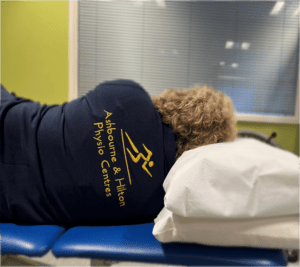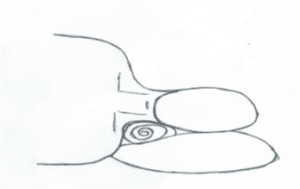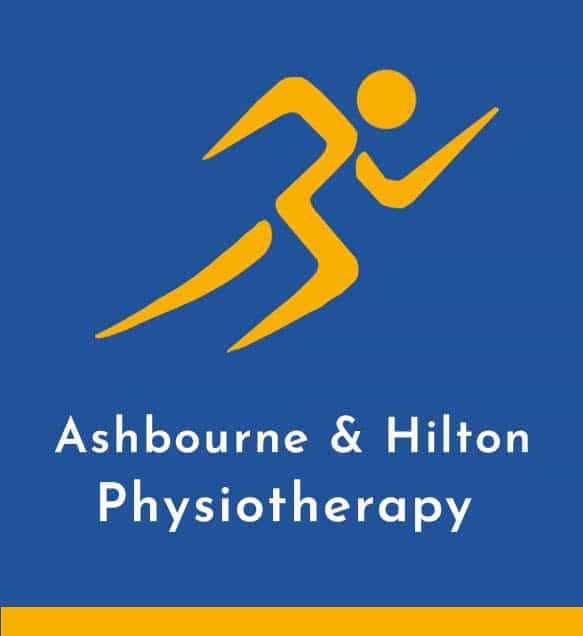How Sleep Position can Help Your Health
We spend a large amount of our life asleep. Investing in a good mattress and pillow goes a long way to aid a restful night’s sleep. It is generally recommended that a mattress is replaced every 6-8 years. Ideally a mattress needs to be soft enough to allow for your natural curves but firm enough to support your joints. Comfort is very subjective and different people find different types of mattress or pillow suit their needs. It is important to do your homework and try different options before purchasing.
Follow some of these simple tips and cost-effective tricks to help you towards a more comfortable and better night’s sleep.
Modifying your sleep position can help with a variety of health problems. You should consider modifying your sleep position if any of the following apply to you.
-
You suffer from a chronic injury involving nerve, muscle or joint irritation
-
You suffer from stiffness or pain in the morning that is relieved with movement or gets easier as your day progresses
-
You wake at night with numbness or pins and needles that resolves with a change of position
-
You suffer from back, neck or shoulder pain
-
You suffer from heart failure or reflux
The basic principle of good positioning is to support your joints in their most neutral position. This is often in the middle of their range of movement. This will reduce the stress put on the joint and surrounding structures, especially when they are in one position for a sustained amount of time. There are no right or wrong way of sleeping but you can modify how you sleep, and add support to improve the quality of your sleep and help manage your pain or health better.
Studies have shown most adults prefer to sleep on their side, the least common preferred position is sleeping prone or face down. There are a variety of positions you can sleep in, and they all have different advantages and disadvantages. Here are some of the positions and some things to consider.
Side Lying
Lying on you left side has been proven to reduce symptoms of reflux and indigestion. This is because of the orientation of the stomach. Lying on your right side can ease the symptoms of congestive heart failure. Some studies have even suggested this position can provide some protection for people with heart failure from further damage.
Side sleeping can be stressful for the neck and shoulders. One of the most important things to consider when side sleeping is supporting your neck. It is important to have the right number and thickness of pillows to support your neck in to neutral. This is a challenge, too many pillows and your head tilts away from the bed, too few and your head tilts towards. Sustained tilting of you head can irritate the nerve roots in your spine, giving you pins and needles, or compress/stretch facet joints in your neck.

High Pillow

Low Pillow
Correct Position
It can be beneficial to support the lower part of your neck with a towel roll to provide it with more support, and to fill the gap. Roll the towel up and fix it with micro pore or cello tape, then place it inside your pillowcase. As you can see this will help support the neck in a more neutral position. This is a good technique to try if you wake with numbness or pins and needles, have neck pain and some people who wake with dizziness or headaches. This also gives your shoulder a bit more space, so it doesn’t collapse forward as you lie on it. You can also consider making or buying a butterfly pillow see the video below. Discuss pillows with your therapist if you have any questions.

This video explains how you can adjust pillows to support your neck without spending a fortune.
Please click on the link below:-
The same effect of tilt can happen lower down in the spine, our trunks are not straight at the side. This can be more of a problem for women as they have more curves, often thinner at the waist than and the pelvis. A good mattress goes a long way to help but sometimes it is useful to pull a small towel square or a small cushion under your body. This can be useful if your back aches in side lying and find you must swap sides often.

Image credit: www.sleepadvisor.com
In side lying you can also end up twisting. With your top leg or arm pulling your spine in to rotation. Your top arm will cause the top of your body to twist towards the bed, rolling on to your front, or away from the bed, rolling on to you back. Supporting one or both limbs on pillow will help maintain a less twisted position. This is also a good technique to keep your pelvis in neutral which can cause aching in your hips or back. Both arm and leg can also be supported with a body pillow.

Lying on your back
Lying on your back can be beneficial for your back, the horizontal surface can help reduce excessive curvature in your spine. This can be helpful with muscle spasm in your back. It can also aggravate some back problems; the flat surface doesn’t always support the spine in its natural curvature. This can be relieved with a small towel roll in the Lumbar spine or in the neck. Some people have tight hip flexors, this means when their legs are flat on the bed theory pelvis is

Image credit: www.sleepadvisor.com
pulled in to anterior tilt, arching the lower spine away from the bed. This can be eased by supporting the legs on a few pillows. Although constantly keeping the hips flexed means they never get a good stretch and this position can make your hip flexors tighter. Always make sure you stretch your hips regularly if using this position long term.
Lying on your tummy
This position has been found to be a good for oxygenation. The bases of the lungs stretch down more towards the back of your body. Lying on your tummy leaves them uncompressed and free to expand, making it much easier to take a big breath. However, there are some studies that suggest sleeping in the position is bad for your gut health a digestion.

Image credit: www.sleepadvisor.com
When sleeping in this position the neck is often rotated significantly, weight bearing through your cheek and ear. This will aggravate even a healthy neck if sustained for a long period of time.
This can be reduced by placing a pillow halfway across your cheek, allowing your neck to be less rotated. Alternatively, resting your forehead on your crossed arms, although this puts quite a stress on your shoulders. In this position your tummy may sink into the mattress, causing your back to arch. This can be eased with a pillow under your tummy, but again there are some concerns this will compress your stomach and intestines. Overall, it is very challenging in this position to get benefits without other problems.

Lucy Langford – Chartered Physiotherapist specialising in Neuro conditions
Collecting Evidence
Try some of the positions suggested to see if they help you with a specific symptom, such as pins and needles, or improve your quality of sleep. Quality of sleep is very complicated an influenced by many things, activity, mood, tiredness, digestion, stress, light, temperature. It is sometimes useful to collect data to spot trends that influence your sleep quality. There are lots of methods for collecting data from simply keeping a diary of basic information to using an app or Smart watch to identify you light, deep and REM sleep duration. Any trends you see you can use to optimise the quality of your sleep and maximise the associated health benefits. I have treated lots of patients as a physiotherapist, where modifying sleep position has been the missing jigsaw piece to allow recovery from an injury that is persisting and becoming more chronic.
If you have any specific questions about modifying your sleep position or would like more information, please discuss it further with your therapist.
Please contact us on: Tel: 01335 344952 (Ashbourne Clinic)
#ashbournephysiotherpycentre #ashbournephsyio #hiltonphysiotherapycentre #hiltonphysio #ashbourne #physiotherapy #sleep #sleepposition #correctsleeposition #lyeonyourside #bedtime #lovesleep #goodmattress #pillow #sleeping #nosleep #cantsleep #sleepissues




